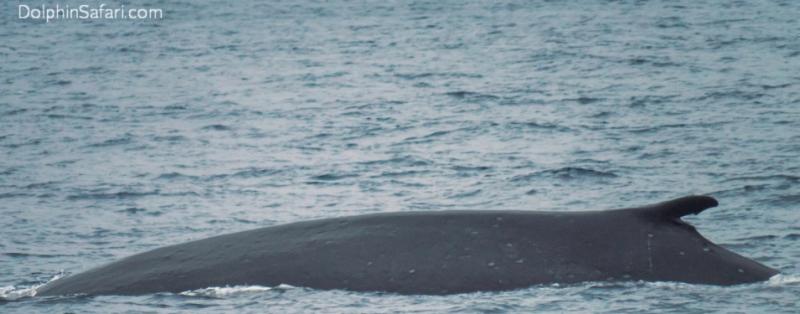
Photo: Caitlyn Nieblas/Capt. Dave’s Dolphin and Whale Watching Safari
The Orange County Register had an interesting article recently. They reported that last Saturday a whale-watching boat reported seeing what they believe to be a “flue” whale, a hybrid blue-fin whale, swimming off Dana Point, CA. The whale has been spotted on and off in the waters off Southern California since 2004. Blue whales are the largest creatures to have ever existed on earth. Fin whales are the second largest.
The first hybrid blue-fin whale was recorded in 1984 off the coast of Spain. The roughly 4-year-old whale had coloration and body proportions that were intermediate between those of a fin and a blue whale, although at 19.4 meters was significantly larger than a fin whale of a similar age. DNA analysis revealed that the mother of the hybrid was a blue whale and the father a fin whale.
Hybrids are not that unusual in nature. Probably the most well-known is the mule, a hybrid between a donkey and a horse. A mule, like many hybrids, is, however, infertile. Not so with the hybrid blue-fin whale. In 2018, a hybrid “flue” was killed by Icelandic whalers and was found to be pregnant when she died.
Whales Online observes that a recurring trend has emerged in the data: of the eight hybrids studied, seven were from a cross between a male fin whale and a female blue (or hybrid) whale.
What could make breeding between these species so unidirectional? Researchers put forward a number of theories. First, it could be a simple mechanical issue, for example, it might be physically difficult for a male blue whale to mate with a female fin whale.
Another scenario, however, is gaining more researchers’ attention: it might be that female blues are unable to find a mate of their own species and must settle for a fin whale partner. Statistics support this hypothesis. Indeed, the global population of fin whales (around 100,000) is four times that of blue whales (25,000). In the researchers’ study region of Iceland, this ratio is even more disproportionate (37,000 fins vs. 3,000 blues).
